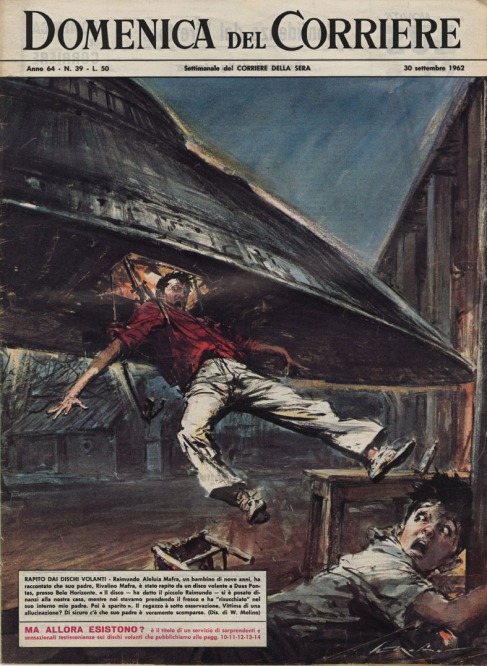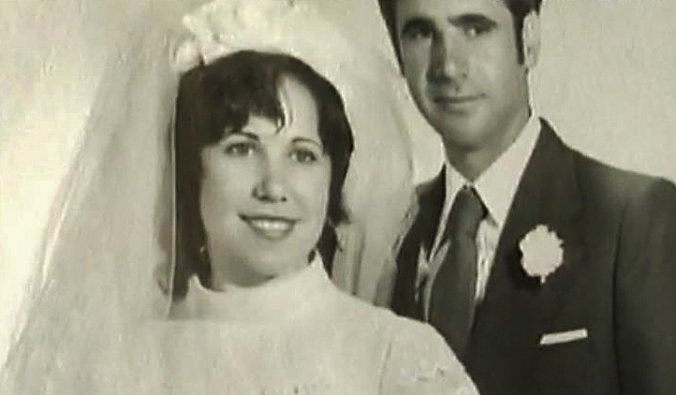
An artist’s representation of Lemuria, minus any UFOs or giant, blonde-haired Lemurians.
In 1864, the English zoologist Philip Sclater noted that lemur fossils had been found in both India and the far-away island of Madagascar. To explain this geographical discrepancy, Sclater proposed that lemurs and similar primates must have originated in Madagascar, which at one point must have been connected to India. Sclater dubbed this ancient land bridge “Lemuria,” writing about his hypothesis in The Quarterly Journal of Science. Other scientists of the time also speculated about missing land bridges and submerged continents, but the idea of Lemuria and its ilk was eventually swept away with the modern concept of continental drift.
While scientists might have given up on Lemuria, a motley crew of occultists, mystics, New Agers, and Tamil nationalists have kept its memory alive and well. During Sclater’s own lifetime, Helena Blavatsky and the Theosophists declared that Lemuria was populated by a prehistoric race of giant egg-laying hermaphrodites called the Lemurians. These spiritual beings lived 34 million years ago, and while they were able to live with dinosaurs, their downfall came with the advent of mammals. For some reason, the Lemurians couldn’t resist having sex with these new animals, a form of bestiality not particularly appreciated by the gods. Needless to say, Lemuria was rightly sunk into the ocean, and the gods began anew with Atlantis.
Even though their homeland was destroyed, the Theosophists insisted that some of the Lemurians lived on as Australian aboriginals, their modern descendants. After Blavatsky’s ridiculous tome The Secret Doctrine elaborated all this, however, the American writer Frederick Spencer Oliver challenged conventional tomfoolery with his book A Dweller on Two Planets. Backed by a spirit named Phylos the Thibetan as his source, Oliver revealed that there were Lemurians living in the United States, tucked away in a hidden city in California’s Mount Shasta. Other authors added onto Oliver’s new themes, and by the 1930s, stories of an enlightened, white-robed people living in the mountain became widespread in more gullible circles.
Nowadays, Mount Shasta has been associated with everything from Bigfoot to UFOs, but the mountain’s tacky Lemurian connection was the subject of a very real mystery in 1934. That year, a 79-year-old man named J.C. Brown appeared in Stockton, California with an incredible proposition. Brown told a journalist from the Stockton Record that he was a retired mining engineer for the Lord Cowdray Mining Company of England. Some three decades earlier, Brown was assigned to work in the Cascade mountain range, the location of Mount Shasta. During his assignment, Brown discovered a blocked-off cave. After clearing away rubble, he went down a tunnel and reached a cavern he described as a “village.”
In one area, Brown discovered a pair of rooms that were filled with golden tablets. Another room held a collection of spears, while a longer one housed the remains of 27 giant skeletons, ranging in height from 6 to 10 feet. Separated from these skeletons were an embalmed man and woman in robes, a couple that Brown believed were king and queen. Ultimately, Brown concluded that this mysterious race of radium-using giants was the fabled Lemurians. To keep his employer’s grubby paws off his discovery, however, Brown kept his lips sealed for the time being.
Over the years, Brown tried to enlist his wife, father-in-law, daughters, and friend in excavating the Lemurian ruins, yet all inconveniently died one after the other. (A cynic might crack about a Lemurian mummy curse at work here.) This marathon of funerals disheartened Brown, but he regained his courage and decided to put together a party of strangers. After spreading his plan around Stockton, and networking with a museum curator, Brown gathered over 80 people for his expedition. As with so many other big-talkers, Brown didn’t provide any proof for his claims. He supposedly had pictures of the site, but they were stored in a Texas bank. In spite of this red flag, Brown’s followers were so confident that some of them gave up their jobs and sold their belongings.
Over meetings held twice a week, Brown claimed to have a net worth of $40,000,000, and told his followers that he’d take them to the ruins on one of his boats. After six weeks of plotting, Brown organized the party to meet at the house of follower John C. Root, where they would leave in the afternoon. On June 18, the appointed day, the excited treasure hunters gathered at Root’s house. The afternoon came and went, and by the time the sun was shining again, the people of Stockton were still waiting. J.C. Brown had failed to materialize at all.
With the disappearance of their leader, some of Brown’s entourage thought they’d been played for fools. Others were afraid that he’d been kidnapped, taken by a person who wanted the treasure for themselves. Townspeople of a more cautious nature smelled a con-artist, yet Brown declined to take money and donations from his followers, a detail that’s led subsequent enthusiasts to believe that the man was genuine. Although the police searched for him, and one follower “confirmed” via psychic information that Brown was okay, the old Englishman was never seen again.
So just who was J. C. Brown? Where did he go, and what was his motive for stringing along a bunch of credulous townsfolk without even making a penny? The Stockton Record stated that Brown once lived in a federal shelter, where he was committed as suffering from amnesia in 1932. Brown appeared to have all his marbles, but on three occasions, complained about being stalked. While we don’t have that much of a strong reason to doubt his sanity, I’ve noticed modern accounts of Brown tend to omit an interesting detail of the story. The day he disappeared, Brown was supposed to give the museum curator the pictures he took of the Lemurian ruins. Perhaps Brown knew he’d taken the hoax as far as it could go, and skipped town over facing the consequences?
In recent years, paranormal researcher Stephen Sindoni has claimed to locate the site of Brown’s cave. Sindoni takes the legends of Mount Shasta seriously, but to his credit, has advanced a candidate for J.C. Brown’s identity. The suspect, John Benjamin Body, was a retired engineer who had relatives right across the street from John C. Root’s house. It’s a remarkable match, yet even if it’s true, we’re still left to ponder over J.C. Brown’s motivation. Was the whole affair a long-winded prank, or something more malicious? Whatever the fate of this mysterious fraudster, we can only hope that the magical, egg-laying Lemurians weren’t too upset about their village being trifled with.
If you enjoyed reading this article, please consider supporting my work by buying my book “Forgotten Lives” on Amazon here. While it doesn’t have anything to do with Lemurian giants, the book treads all sorts of other ridiculous and marvelous characters, such as a playwright who stages real deaths for his work, a corpse that leads a revolution in a banana republic, and a sleazy photographer who claims to take pictures of ghosts. If your tastes lean toward the absurd, do give the book a read and leave a review, death-threat, or channeled psychic message on its Amazon page.



























